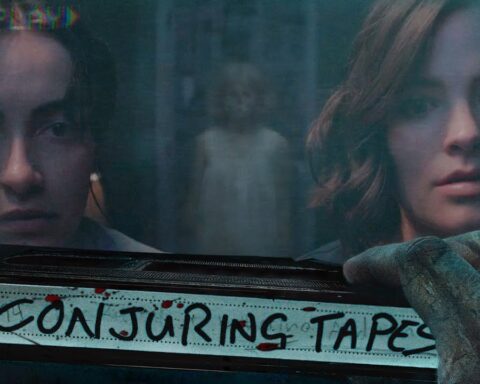Eileen Wuornos, often described as the “first female serial killer” in the United States, became a figure of both fascination and revulsion in the media. Her life story, marked by profound abuse, mental health struggles, and societal neglect, has prompted many to ask whether Wuornos was a victim of circumstances or a cold-blooded murderer. The story of her crimes and subsequent trial is a poignant exploration of the intersection between gender, trauma, and justice, offering insight into the failures of the criminal justice system and the complexities of human behavior.
Early Life: The Genesis of Tragedy
Eileen Carol Wuornos was born on February 29, 1956, in Troy, Michigan, to Leo and Diane Wuornos. Her father, a convicted child rapist, had been imprisoned when she was still an infant, and her mother abandoned her and her brother when Wuornos was just four years old. Raised in foster homes, Wuornos endured a childhood rife with neglect and abuse. At the age of 14, she was sexually assaulted by her foster father, which she later described as the beginning of her violent trajectory. She became pregnant by a man who denied paternity, and she gave birth to a son, whom she was forced to put up for adoption.
By the time Wuornos reached adulthood, she had been emotionally and physically scarred by years of abuse, and her attempts to live independently led to her involvement in prostitution. Struggling with a series of short-lived relationships, Wuornos’s early adult life was chaotic, marked by frequent arrests for petty crimes, such as theft and assault. It was during this time that she began her career as a prostitute on the highways of Florida, a life that would tragically intertwine with the string of murders that would define her legacy.

The Murders: The Crimes That Shocked the Nation
Wuornos’s crime spree, which spanned from December 1989 to November 1990, involved the killing of seven men. Her modus operandi was remarkably consistent: Wuornos would pick up men while working as a prostitute, then rob and kill them, often shooting them in the chest or head. The victims were all middle-aged men who, according to Wuornos, attempted to assault her during the course of their interactions.
Her first victim was Richard Mallory, a 51-year-old man who had a history of arrests for sexual offenses. Wuornos later claimed that Mallory had raped her during their encounter, a claim that, while unverifiable, became a central piece of her defense during the trial. After Mallory, she killed six more men: David Spears, Peter Siems, Tyrone DeShawn Burks, and Charles Edmund Humphreys, all of whom were shot to death.
Wuornos’s killings were not the result of a sudden, unprovoked rage. Rather, they were portrayed as an act of self-defense in a life that had been marked by constant victimization. Wuornos had long struggled with her mental health and had experienced severe trauma from the abuse and neglect she had suffered as a child. In interviews after her arrest, she described her killings as “self-defense,” claiming that her victims had either attempted to sexually assault or otherwise harm her. While some may argue that her perception of these interactions was distorted, the fact remains that Wuornos’s experiences in the sex trade made her vulnerable to exploitation, violence, and harassment from men, and she may have believed that killing them was the only way to protect herself.
Her actions, while horrifying, were influenced by a combination of psychological trauma, societal rejection, and a belief that she had no other means of survival. Many have debated whether Wuornos was a true serial killer or a victim who fought back in a moment of desperation. The complexities of her motivations and the circumstances that led to the murders continue to challenge easy categorization.
The Arrest and Investigation
Wuornos was apprehended on January 9, 1991, after a lengthy investigation into the murders. Following her arrest, Wuornos confessed to the killings, though her motives were not entirely clear. Investigators were initially uncertain whether the murders were random or connected to Wuornos’s life as a prostitute. However, as evidence mounted, including witnesses who reported seeing Wuornos with her victims, it became clear that there was a pattern to the murders.
During her interrogation, Wuornos confessed to the killings in a chillingly matter-of-fact manner, offering few apologies or explanations for her actions. She claimed that the men had attacked her and that she had killed them in self-defense, though her accounts were inconsistent and often contradictory. Despite this, investigators believed that her confessions were credible enough to charge her with murder. In total, Wuornos was charged with six of the seven murders, and her trial became one of the most widely publicized criminal cases in the United States at the time.

The Trial: A Complex Case of Gender, Justice, and Mental Health
Wuornos’s trial began in 1992, and it quickly became a media spectacle. She was portrayed as both a monster and a victim, with the press focusing on her past and her emotional instability. Her defense team, led by attorney Don Knight, attempted to argue that she had acted in self-defense, a plea that was complicated by Wuornos’s own erratic behavior. In court, Wuornos frequently shouted at her lawyers and displayed bizarre behavior, such as claiming that she had been set up by the police. Despite her attempts to defend herself, the jury convicted Wuornos of first-degree murder for the killing of Richard Mallory, and she was sentenced to death.
Wuornos’s trial raised important questions about the intersection of gender, mental health, and the criminal justice system. As a woman in a male-dominated criminal world, Wuornos was often treated as an anomaly—her case being seen as unusual because of her gender and the fact that she was a prostitute. Some feminists argued that Wuornos’s killings should be viewed in the context of her long history of victimization and trauma, which they believed had been ignored in the trial process. Others pointed out that Wuornos’s violent acts were indicative of the broader dangers faced by women in the sex trade, where vulnerability to abuse and violence is often ignored by society.
Moreover, the issue of Wuornos’s mental health was a critical aspect of the trial. Many psychologists and psychiatrists believed that Wuornos suffered from a variety of psychological disorders, including borderline personality disorder, antisocial personality disorder, and post-traumatic stress disorder (PTSD). Her behavior during the trial, as well as her claims of being set up and persecuted, suggested that she was suffering from severe delusions. However, the defense’s argument that she was legally insane did not succeed, and the jury found her guilty of all charges.
Wuornos’s defense team also failed to establish a compelling case for her mental health at the time of the murders. Despite expert testimony that she was suffering from significant psychological trauma, the court was unsympathetic to her claims. The prosecution argued that Wuornos had killed for financial gain, not out of self-defense, and the jury agreed, sentencing her to death.
The Sentencing and Execution
Eileen Wuornos’s sentence was handed down on January 14, 1992, when she was convicted of first-degree murder. Her sentencing took place in a Florida courtroom, where she was ordered to die by lethal injection. Despite multiple appeals and attempts by her defense team to have her sentence commuted or reduced, Wuornos remained steadfast in her refusal to accept help, and she rejected any efforts to delay her execution. In a final interview, she stated, “I’d rather die than be in prison.”
Wuornos’s execution took place on October 9, 2002, at the Florida State Prison in Starke, Florida. She was 46 years old at the time of her death. Her final words before her execution were a mix of defiance and bitterness, as she maintained her innocence in the murder of some of the men, while others expressed that her actions had been justified in her eyes. Her execution was widely covered by the media, and it sparked a debate over the morality of the death penalty, especially in cases involving individuals who have suffered significant trauma.

The Case of Eileen Wuornos and the Female Violence Bias
Eileen Wuornos’s case continues to be a subject of academic inquiry, public debate, and media attention. The question of whether Wuornos was a victim of her circumstances or a calculated killer remains unresolved. Some argue that she was a woman who had been failed by society at every turn, from her childhood to her life in the sex trade. Others contend that she took the lives of seven men in cold blood, regardless of the trauma she had experienced.
Wuornos’s story is a tragic reflection of the intersection of gender, mental health, and justice in the criminal justice system. It highlights the ways in which women, particularly those involved in sex work, are often overlooked and marginalized, both in the legal system and in society at large. Her case serves as a reminder that violence and trauma, especially when unaddressed, can have devastating consequences.
The crimes and trial of Eileen Wuornos have left a lasting mark on American society, challenging us to rethink our assumptions about criminality, justice, and the experiences of those on the fringes of society. Whether one views her as a victim or a perpetrator, her story is one of pain, survival, and the complexities of human nature.






